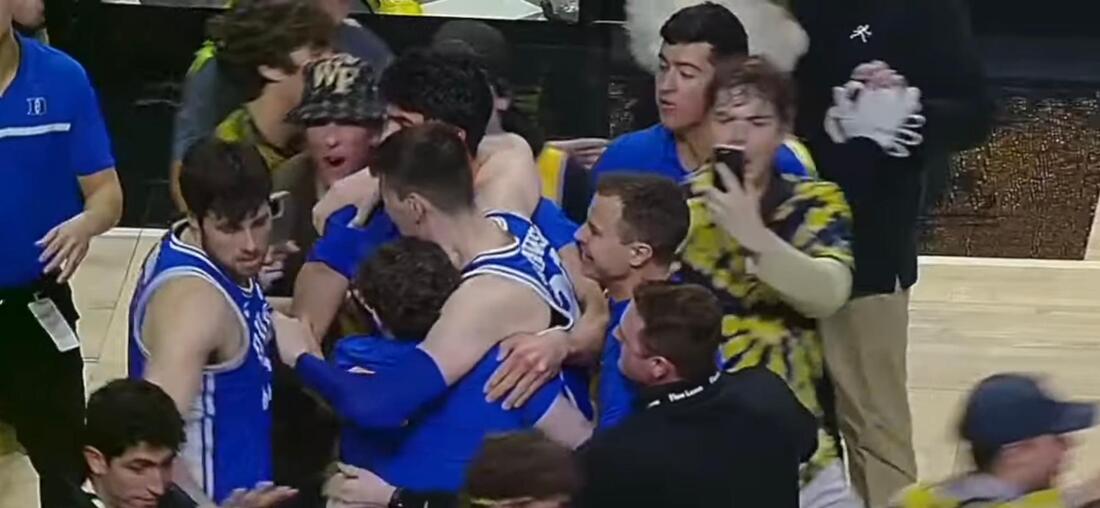|
by Julian Spivey I never would’ve thought in 100 years I’d be giving my sports hero of the week honor to the owner of a NASCAR track but after seeing the instant classic that was the Ambetter Health 400 from the Atlanta Motor Speedway NASCAR Cup Series race on Sunday, February 25 here I am. Marcus Smith is the CEO, president and director of Speedway Motorsports Inc., which owns 11 racing facilities across the United States, nine of which currently field NASCAR Cup Series points-paying races and another that for the second year in a row will feature the sport’s All-Star race this season. Atlanta Motor Speedway, which opened in 1960, is one of the sport’s oldest tracks but after years of the racing becoming less and less exciting due to wear and tear and needing a repave, Smith’s company took the – at the time controversially – plan of turning the 1.5 mile into a superspeedway drafting track a la Daytona and Talladega Superspeedway, despite being a mile shorter than either of those tracks. Many thought the idea of turning a smaller track into such a track would ruin the racing and lead to crash fests. It turns out what happened was Atlanta Motor Speedway becoming one of the most unique tracks in NASCAR and putting forth racing that’s less of a crash fest than Daytona and Talladega can often become and putting a bit more into the driver’s hands, while also making it easier for competitive, close and exciting racing. The first signs of this came last year, especially in the track’s fall race, with a fantastic race that was shortened by rain, which had many believing the intensity of not knowing exactly when the race might be halted and end early led to the exciting racing. But the Ambetter Health 400 on Sunday proves it’s the track and the competitors making for such exciting racing. And racing doesn’t get much more exciting than how this race finished up with a three-wide, photo finish at the start-finish line leading to the third closest, by timing, finish in NASCAR history and arguably one of the sport’s greatest ending of all time that saw Daniel Suarez just edge out Ryan Blaney and Kyle Busch. There are some questions as to how long Atlanta Motor Speedway can provide this type of excitement as the surface ages but for right now Smith and SMI took a track that was at best like many on the circuit and at worst a snoozer and turned it into the track many fans are most anticipating. My sports zero for the week has been one of the biggest stories in the sports world over the start of 2024 actually – court rushers in college basketball (and also field rushers in college football). It’s time to put an end to this dangerous practice and after a couple of high-profile incidents in college basketball already in 2024 there’s never been a bigger outcry than now to do something about it. The only question is how the NCAA goes about doing that. In January, University of Iowa superstar Caitlin Clark, who recently broke the record for most points scored in a women’s college basketball career, was knocked down by a spectator rushing the court following Ohio State’s upset of Iowa. Luckily, Clark escaped the incident without serious injury and didn’t miss any time. Then on Saturday, February 24, after Wake Forest defeated the eighth-ranked Duke Blue Devils, Duke’s seven-foot star Kyle Filipowski found himself on the court and hobbled after being run into by a spectator rushing onto the court. Following the game, Filipowski could be seen with an ice bag wrapped around his right kneecap. Filipowski received a sprained knee from the incident and it’s currently unknown if he’ll miss any playing time. When players are becoming caught up in these court storming incidents it’s something that must come to an end. It’s not only dangerous for the athletes, coaches, officials, etc., but the spectators themselves. Not only are injuries possible, but one could easily foresee a scenario where someone gets knocked to the ground and trampled to death beneath a hoard of rushing feet. But remember my question of how the NCAA can handle court and field rushing? There is a penalty for doing so, but it’s doled out by the conferences themselves and not the NCAA at large and not all conferences choose to do so. The Atlantic Coast Conference (ACC), which Wake Forest University competes in, doesn’t currently have a penalty for court rushing. The Southeastern Conference (SEC) currently fines schools $100,000 for the first offense of court rushing, $250,000 for the second and $500,000 for the third and each subsequent offense. It seems to be the harshest penalty of the ones I found for court or field rushing but some universities don’t care about paying the fines. This is why the NCAA should take control of the issue. Fines do nothing to deter fans from court rushing so the penalties have to be more severe. I think games that end in court or field rushing should immediately be forfeited by the home team. If teams start taking Ls to the win-loss column I think it would put an end to the court-rushing process pretty quickly. Athletes are already getting injured due to this dangerous practice. The NCAA needs to step in before somebody dies because of it.
0 Comments
Leave a Reply. |
Archives
July 2024
|

